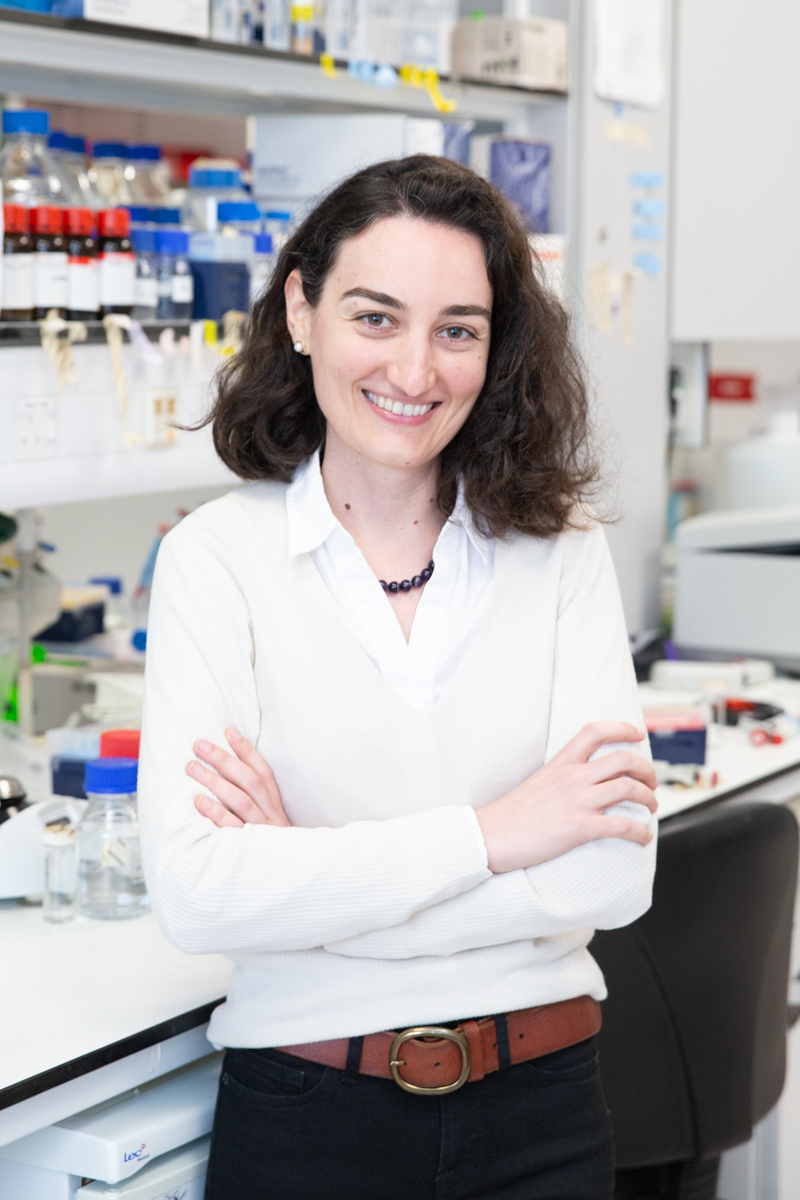
Dr Sumru Bayin
Position: Group Leader
Personal home page:
www.bayinlab.com
PubMed journal articles - click here
An understanding of the diversity of neural progenitors and flexibility in their fate choices - lineage plasticity - is crucial for understanding how complex organs like the brain are generated or undergo repair. The neonatal mouse cerebellum has emerged as a powerful model system to uncover regenerative responses and study progenitor plasticity due to its high regenerative potential. The cerebellum is a folded hindbrain structure that is important for skilled motor movements and higher order cognitive functions. Its protracted development makes the neonatal cerebellum susceptible to injury around birth. Indeed, cerebellar injury and hypoplasia is the second leading risk factor for autism spectrum disorders. Therefore, it is critical to understand the regenerative potential of the neonatal cerebellum and identify factors that could enhance repair.
We have previously shown that the cerebellum can recover from the loss of at least two types of neurons via distinct regenerative mechanisms (Wojcinski, Nature Neuroscience, 2017; Bayin, eLife, 2018; Bayin, Science Advances, 2021). In one case, when the rhombic lip-derived granule cell progenitors are ablated, a subpopulation of the ventricular zone-derived nestin-expressing progenitors (NEPs) that normally generate Bergmann glia and astrocytes undergoes adaptive reprograming and replenishes some of the lost granule cell progenitors. However, the full repertoire of molecular and cellular mechanisms that regulate neonatal cerebellar development and adaptive reprograming of NEPs upon injury remain to be studied.
Interestingly, the regenerative potential of the neonatal cerebellum dramatically decreases once development ends, despite the presence of NEP-like cells in the adult mouse cerebellum. Furthermore, we found they are able to respond to different types of cerebellar injury by increasing their numbers, however neuron production is blocked and only some astrocytes for produced. We hypothesize that the lack of regeneration is due to a lack of pro-regenerative developmental signals in the adult brain in addition to epigenetic silencing of stem cell differentiation programs and inhibitory cellular mechanisms as development is completed. Such inhibitory mechanisms are likely needed to prevent aberrant reprograming and tumor growth.
Our lab is interested in answering two overarching questions:
1) What are the cellular and molecular mechanisms that enable regeneration in the neonates and inhibit in the adult?
2) Can we facilitate regeneration in the brain?
Understanding the molecular mechanisms that govern neural stem cells not only have implications for facilitating repair but also will allow us to dissect the function of pro-regenerative mechanisms in brain tumorigenesis.
Symplectic Elements feed provided by Research Information, University of Cambridge
Bayin N.S., Mizrak D., Stephen N.D., Lao Z., Sims P.A., Joyner A.L.* (2021) Injury induced ASCL1 expression orchestrates a transitory cell state required for repair of the neonatal cerebellum. Science Adv. DOI: 10.1126/sciadv.abj1598
Bayin N.S., Wojcinski A., Mouron A., Saito H., Suzuki N., Joyner A.L. (2018) Age-dependent dormant resident progenitors are stimulated by injury to regenerate Purkinje neurons. eLife DOI: 10.7554/eLife.39879
Wojcinski A., Lawton A., Bayin N.S., Lao Z. and Joyner A.L. (2017) Cerebellar Granule Cell Replenishment Post-Injury by Adaptive Reprogramming of Nestin+ Progenitors, Nature Neuroscience DOI:10.1038/nn.4621
Bayin N.S., Frenster J., Sen R., Si S., Modrek A., Ortenzi V., Zagzag D., Chiriboga., Snuderl M., Golfinos J.G., Doyle W., Galifianakis N., Chesler M., Illa-Bochaca., Barceloss-Hoff M.H., Dolgalev I., Heguy A., Placantonakis D.G. (2017) Notch signaling regulates metabolic heterogeneity in glioblastoma stem cells, Oncotarget, DOI:10.18632/oncotarget.18117
Bayin N.S., Frenster D.J., Kane J.R., Rubenstein J., Modrek A.S., Baitalmal R., Dolgalev I., Rudzenski K., Scarabottolo L., Crespi D., Radaelli L., Snuderl M., Golfinos J.G., Doyle W., Pacione D., Parker E.C., Chi A.S., Heguy A., MacNeil D.J., Shohdy N., Zagzag D., Placantonakis D.G. (2016) GPR133 (ADGRD1), an adhesion G protein-coupled receptor, is necessary for glioblastoma growth. Oncogenesis DOI:10.1038/oncsis.2016.63















